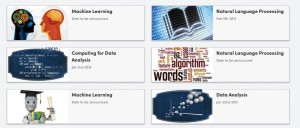As the Internet evolves before our very eyes, it takes on every role imaginable – entertainer, informer, communicator and even educator. Nisarg Kamdar analyses the e-learning trend and what it means for India’s future
 Rod Paige, former U.S. Secretary of Education, famously commented in 2002 – a period when Internet penetration was woefully low – “Education is the only business still debating the usefulness of technology.” Eleven years on, it can be stated that the debate has been settled and the Internet has been identified as technology critical in advancing affordable education and curating ideas.
Rod Paige, former U.S. Secretary of Education, famously commented in 2002 – a period when Internet penetration was woefully low – “Education is the only business still debating the usefulness of technology.” Eleven years on, it can be stated that the debate has been settled and the Internet has been identified as technology critical in advancing affordable education and curating ideas.
As Internet penetration steadily climbs, online education, or e-learning as it is referred to in popular parlance, is gaining traction in India. An article in the Times of India forecast India’s online education market expanding into a $40 billion industry by 2017, a 100 per cent rise from current levels. In spite of having one of the largest education systems in the world with a network of more than 1 million schools and 18,000 higher education institutions, levels of education and literacy haven’t necessarily inspired confidence. A concerted campaign to develop and integrate online learning tools with traditional methods of imparting knowledge can go a long way in filling this lacuna.
Initiatives of the Government
Having recognized the challenge of educating such a populous country plagued by a severe scarcity of teachers and decrepit infrastructure, the government has devoted a substantial amount of its resources to establishing a vigorous foundation for online education. The National Programme on Technology Enhanced Learning or NPTEL is a government-sponsored initiative to develop curriculum-based content to aid engineering education of undergraduates. A large number of videos from some of the premier institutes of the country have been hosted on the website with the sole aim of enhancing the quality and the approach to technical education in India. Phase 1 has some 600 courses being covered.
Phase 2 of the programme envisages the entire spectrum of the IITs, NITs and IISc being content generators. The credibility and impact of the enterprise will be catapulted, once value-added case studies are appended and experiential learning features are implemented. Phase 2 marks a major milestone with its inclusion of question banks and case studies in the courses, which is a euphemism for enforcing herd mentality. The provenance of innovation and research is embedded in questions arising from the unencumbered cognitive centres of the pupil rather than being fed with questions to ponder over. The latter is a self defeating exercise and it would be a sheer tragedy to burden online education with this burden.
 Massive Open Online Courses (MOOCS)
Massive Open Online Courses (MOOCS)
MOOCs have fundamentally altered the education that was being imparted, and engineered a global shift in the scope, blurring the limitations which so distinctly existed only yesterday. Geographical boundaries have been bulldozed, and attending a class in Political Science offered by MIT is eminently possible. There is a critical difference which delineates this bunch of resources from your regular animated curriculum material – the experience is engrossing and augmented by social interaction, thus enabling features such as peer-reviewed papers.
Aniket Parikh, a second year student of Mining Engineering at IIT Kanpur, opines, “I believe that even though e-learning definitely has long-term potential in India, the right way to go about it is systematically via establishment of prerequisite infrastructure and distribution conduits.” Indians are the second largest group registering on e-learning websites, which is testimony to the growing influence of online education and sustained shift towards a more refined approach to intellectual stimulation. Anant Agarwal, president of edX, a not-for-profit Harvard-MIT joint venture, was the benefactor of $60 million in funding to host a huge basket of lectures from the colleges online, believes that MOOCs are “the single biggest change in education since the printing press.” The influence of these resources is further amplified by the inability of a substantial number of major universities in offering simultaneous dual degrees. In the 21st century where one is expected to possess a working knowledge of every element and field one interacts with during the course of his professional work, such monolithic systems are strenuous and counterproductive.
There should be a clear move towards encouraging enrolling for dual undergraduate courses simultaneously. An upcoming field is patent lawsuits, for which one needs to be familiar with the finer nuances of law and technology. Unfortunately, this is a field dominated by lawyers with absolutely no knowledge of the technical intricacies. Rather, an engineer or lawyer resorts to online MOOCs to gain familiarity with the opposite field as the university still seems reluctant to enforce these reforms. Mumbai University’s decision to allow technical degrees to be pursued in conjunction with legal qualifications must be applauded in this light.
Reaction
Harsh Swaminarayan, an IT engineer who teaches at a public school in Dadar, regularly uses Khan Academy for displaying “simulation and videos explaining scientific concepts.” Harsh strongly believes that aids like Khan Academy help him establish a teaching schedule more suitable to the students grasping capabilities, rather than leading the entire batch at the same pace doing justice to neither the fast pickers nor those encountering difficulties with the subject.
Conclusion
That online education is basal to any sustainable education revolution in this country is beyond reproach, but a certain degree of caution is indispensable when observing the participation of Indian companies and universities in this. Their work has left a lot to be desired and one ends with the hope that Indian companies would refrain from rebranding the various audio and video cassettes that were popular in the ’90s as online education, but rather pioneer an era of revolutionary education tools, available across the length and breadth of the country.
Geographical boundaries have been bulldozed, and attending a class in Political Science offered by MIT is possible[…]The experience is augmented by social interaction [and] […]features such as peer-reviewed papers
Online Course Providers
The leaders in the MOOCs space, as featured by Business Standard are:
1. Coursera (US): for-profit, close to 2 million users, 5 per cent from India; offers 203 free courses as well as paid certificate courses which comes with an exam to judge the knowledge grasped.
2. Khan Academy (US): for-profit, founded by the ‘other’ Salman Khan, of Bangladeshi origin. His YouTube maths and science videos are highly popular in high school owing to their stress on basics and interactive tests.
3. edX (US): non-profit, founded by MIT and Harvard University. Courses are offered only in science subjects as of now, specifically in computer science.
4. Udacity (US): for-profit, outgrowth of free computer science classes offered in 2011 through Stanford University.
Volume 2 Issue 9





























